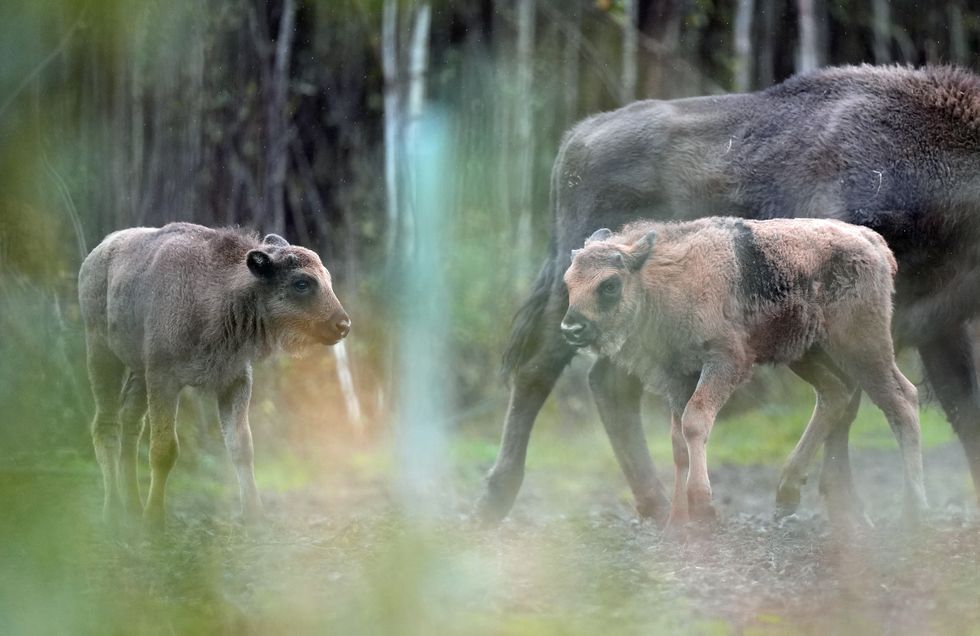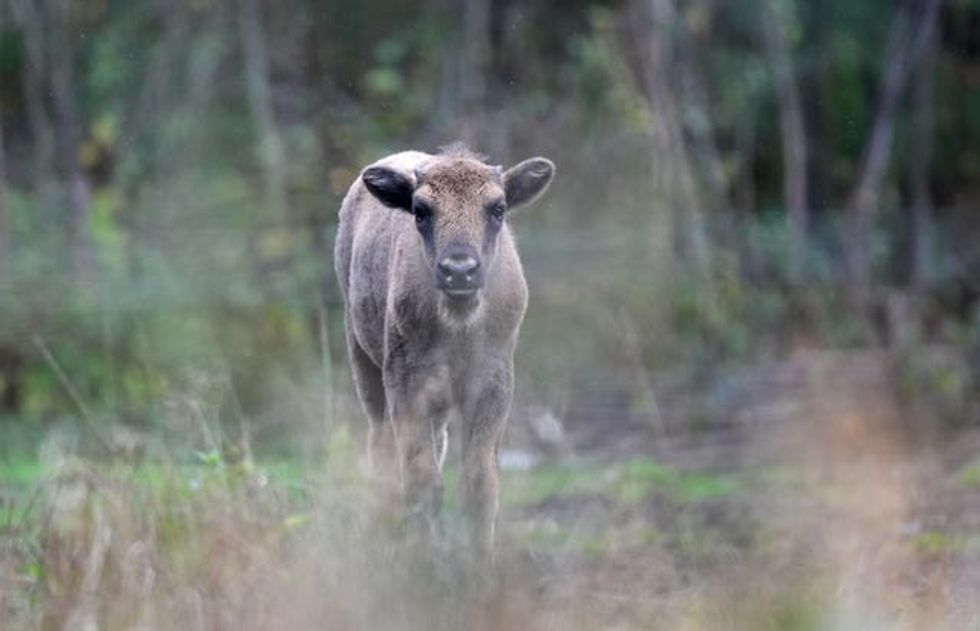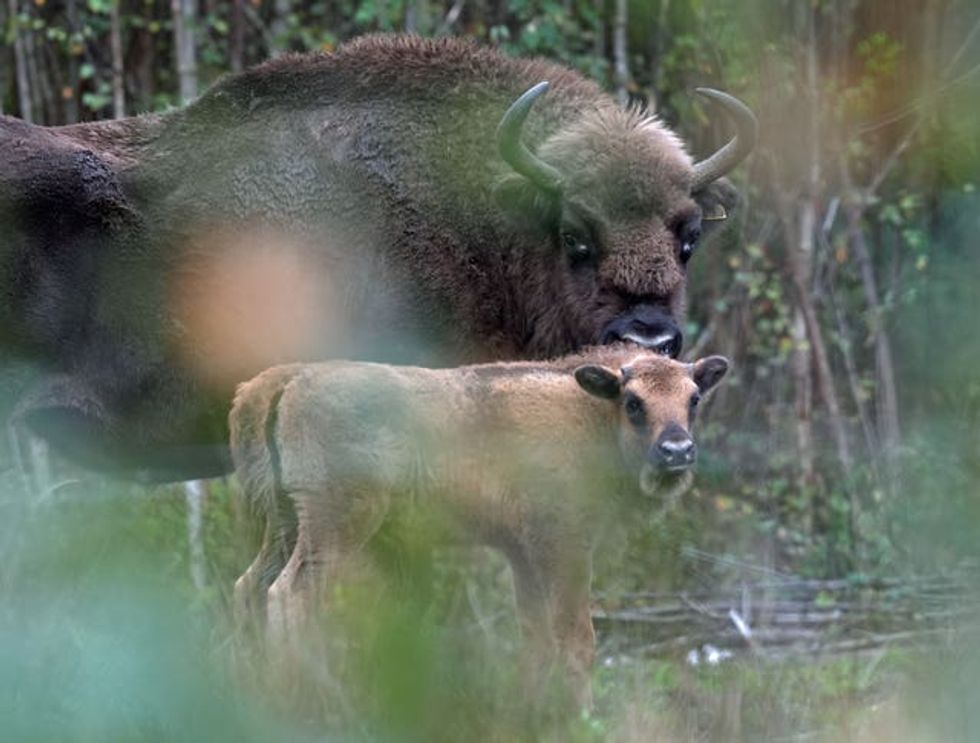Viral
Emily Beament
Oct 16, 2024

Two bison calves have been born to the herd at Blean Woods, near Canterbury, Kent (Gareth Fuller/PA)
PA Wire/PA Images - Gareth Fuller
Bison introduced to an ancient British woodland to help tackle the nature and climate crises have welcomed two new calves to their herd, conservationists said.
The two female calves have been born at Blean Woods, Canterbury, where a small herd of three females and a bull were introduced into a fenced enclosure in 2022 to naturally manage the woodland habitat.
Kent Wildlife Trust and Wildwood Trust, who run the project, said the latest arrivals were born four days apart to the two younger females who arrived in 2022, and bring the wild bison herd population to eight.

The bison have been placed in West Blean and Thornden Woods to restore complex habitats to help nature thrive and be more able to cope with climate change, and store more carbon in woodland to reduce the emissions driving up temperatures.
European bison, the continent’s largest land mammal, are the closest living relative to ancient steppe bison that would have once roamed Britain and naturally managed the habitat.
Their natural behaviour – grazing, felling trees, eating bark and taking dust baths – will open the canopy, allow woodland regeneration and create new spaces for other wildlife.
Under UK law, European bison are classed as dangerous wild animals and 43 kilometres (27 miles) of fencing surround the bison areas to keep them away from the public, but the conservationists say this causes problems in Blean Woods as there is a network of footpaths crisscrossing the site.

The herd currently roam in 50 hectares of woodland, but a £1 million project to build the UK’s first ever bison bridges has started, which will increase their range to 200 hectares.
The four bridges, the first two of which should be completed by the end of 2024 and undergoing safety checks before use, will allow bison to pass through the woodland while ramblers walk above – perhaps even catching a glimpse of the newly increased herd.
The matriarch from Scotland and two younger females from Ireland were released in July 2022, with one of the younger animals giving birth in late summer to the surprise of the conservation team who were not aware she was pregnant when she arrived.
Just before Christmas 2022, the bull from Germany was released, and in winter 2023, the matriarch gave birth to a male calf.
The latest births bring the total calves born in the woodland to four, and conservationists say they are genetically important, coming from a specially selected lineage, and will form part of the European breeding programme which is helping the species recover from the brink of extinction.
Bison ranger for Kent Wildlife Trust Hannah Mackins said: “The rangers check the bison daily and the herd sometimes hear us working around here and come up to see us.
“On this occasion, to my absolute astonishment, one of the females came up behind the group and I saw underneath her she had a little calf.
They're suckling from mum, growing quickly by the day. Their little horns are already starting to come through
Hannah Mackins, bison ranger
“Although we were thinking she might have been pregnant, we weren’t expecting to have an arrival so soon and the fact she was confident enough to bring her calf up to the corral where she knew we were working was such an honour.”
And she said the team were “absolutely delighted” to welcome the two calves.
“They’re suckling from mum, growing quickly by the day. Their little horns are already starting to come through and we’re happy with the progress of the herd.
“They’re all protecting the calves well, spending time out in the woods and occasionally coming up to see us as well. So, we’re really happy with how the herd are doing.”
Paul Whifield, director general of Wildwood Trust, said: “It’s always been part of this project to allow the herd to grow naturally over time through breeding.
“These births show that the animals are showing natural healthy behaviours and thriving in the woodlands that they are regenerating.”
The Wilder Blean project has also involved introducing Longhorn cattle, iron-age pigs and Exmoor ponies.
Top 100
The Conversation (0)













